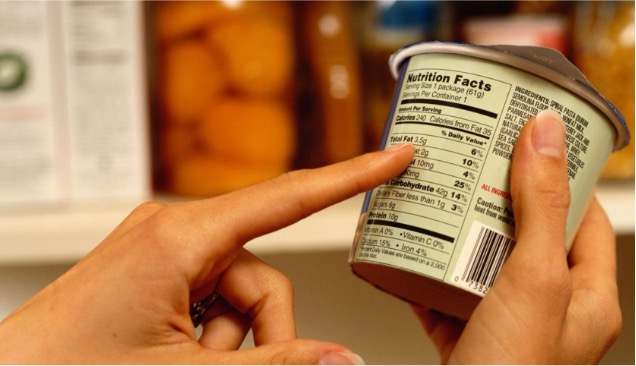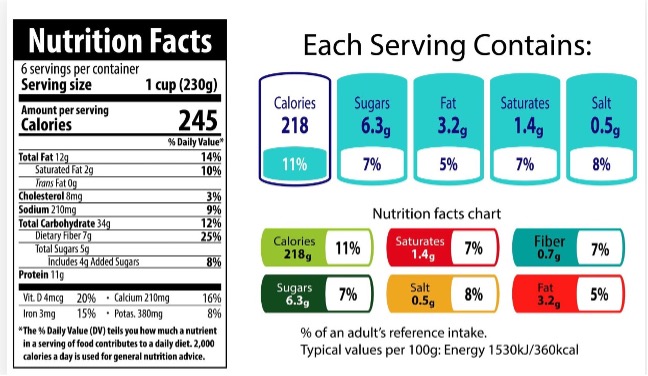Learn to Decode Nutrition Labels to Make Healthy Choices Without Falling for Marketing Tricks
We often buy foods guided by words like “light” or “natural” without checking what they actually contain. Nutrition labels are there to help you, but they are not always easy to understand. This guide will show you how to interpret key information in a practical way, so you can choose healthier products with confidence and ease.
Arantxa Jiménez – Neolife Nutrition Unit
Introduction
The nutrition label on packaged products is designed to help you make informed choices, yet many consumers either don’t read it or don’t understand it. Studies show that only between 30% and 60% of the population reviews labels before buying, and an even smaller proportion knows how to interpret them correctly.

Why are they so difficult to understand?
- Lack of knowledge and nutrition literacy: Without these, it’s hard to process values such as calories, fats, and sugars.
- Time and format barriers: Dense labels with tiny print or complex tables are impractical for quick shopping.
- Misleading marketing perception: Many products with claims like “healthy,” “natural,” or “fortified” may still contain high levels of sugar or sodium.
What to look for on a nutrition label
- Serving size and servings per container: Some products contain multiple servings, which changes the calculations.
- Calories per serving: Useful for managing total daily intake.
- Nutrients to limit: Added sugars, saturated fats, sodium — important for preventing chronic diseases.
- Nutrients to encourage: Protein, fiber, vitamins, and minerals.
- Ingredients list: The first items are the most abundant; if additives and sugars appear before fruits or vegetables, the product is more processed.

Front-of-pack labels: Do they make choices easier?
Front-of-pack (FOP) systems like Nutri-Score, traffic-light labels, or warning symbols provide quick insight into a product’s nutritional profile:
- Nutri-Score, utilizado en España y otros países europeos, califica de A (verde) a E (rojo) según contenido de azúcar, sal, grasas y nutrientes beneficiosos.
- Evidence suggests consumers prefer visual, simple, and color-coded labels.
Real benefits of using labels wisely
- Frequent label readers are 2 to 4 times more likely to meet daily fiber recommendations, eat more vegetables, and reduce sugary drinks.
- In Spain, people following structured diets use labels more often and have greater nutritional knowledge.
Practical strategy: A step-by-step guide
- Compare similar products: Check values per 100 g or per serving to see which has less sugar or fat.
- Prioritize visual FOP systems (Nutri-Score or traffic lights), if available.
- Avoid misleading claims: Terms like “light,” “high in protein,” or “natural” don’t guarantee a healthy product.
- Watch out for problematic ingredients such as corn syrup, hydrogenated oils, or hidden sodium.
- Use apps or educational guides to help you interpret information quickly.
Conclusion
The key to reading nutrition labels isn’t memorizing numbers, but training your eye to spot essential nutrients and warning signs. With knowledge and practice, you can turn the information on labels into choices that truly improve your health.
BIBLIOGRAPHY
(1) Giró-Candanedo et al. (2022). Use and Understanding of Nutrition Labels: Impact of Diet Attachment. Foods. 11(13):1918. PMCID: PMC9266186 pubmed.ncbi.nlm.nih.gov+3PMC+3SpringerLink+3
(2) Persoskie , Hennessy E., Nelson W.L. (2017). US Consumers’ Understanding of Nutrition Labels in 2013. Preventing Chronic Disease, 14:170066 CDC
(3) Krishnaraj et (2024). Impact of Food Labels on Consumer Purchasing Decisions. European Journal of Nutrition & Food Safety 16(11):44-51 journalejnfs.com
(4) Persoskie et al. (2011). Nutrition knowledge’s effect on label use. PubMed Review National Academies Press+4pubmed.ncbi.nlm.nih.gov+4PMC+4
